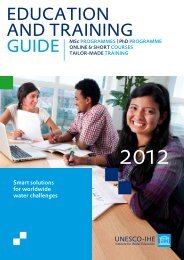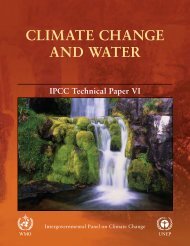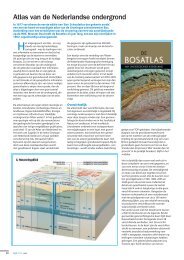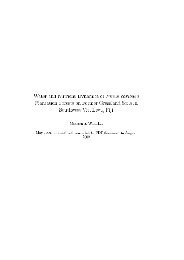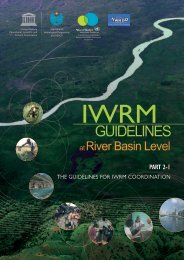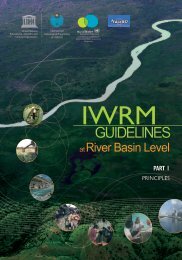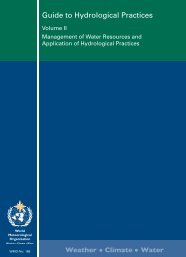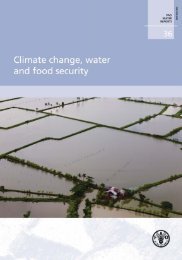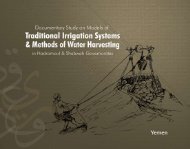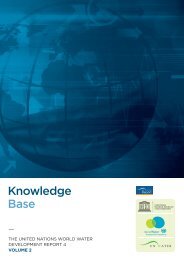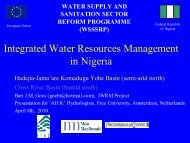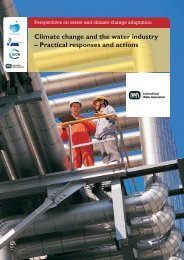Non-renewable groundwater resources: a ... - unesdoc - Unesco
Non-renewable groundwater resources: a ... - unesdoc - Unesco
Non-renewable groundwater resources: a ... - unesdoc - Unesco
- No tags were found...
You also want an ePaper? Increase the reach of your titles
YUMPU automatically turns print PDFs into web optimized ePapers that Google loves.
CHAPTER 1 ■ CONCEPT AND IMPORTANCE OF NON-RENEWABLE RESOURCESThe way in which the utilisation of non-<strong>renewable</strong> <strong>groundwater</strong> arises can be conveniently classified(Foster and Kemper, 2002-04) into :● planned schemes, in which mining of aquifer reserves is contemplated from the outset, usuallyfor a specific development project in an arid area with little contemporary <strong>groundwater</strong>recharge (eg. Figure 3)● an unplanned basis with incidental depletion of aquifer reserves, as a result of intensive<strong>groundwater</strong> abstraction in areas with some contemporary recharge but where this provessmall or where there is limited hydraulic continuity between deep aquifers and theirrecharge area (e.g. Figure 4).Unplanned depletion of non-<strong>renewable</strong> <strong>groundwater</strong> reserves can undermine, and potentiallyerode, the economic and social vitality of the traditional <strong>groundwater</strong>-dependent community– and instances of the collapse of such rural communities are known. Hence, there is need toplan the exploitation of non-<strong>renewable</strong> <strong>groundwater</strong> <strong>resources</strong>, and guide their utilisation witha view to making communities better prepared socio-economically to cope with increasingwater stress as aquifer storage is depleted.Unplanned depletion of non-<strong>renewable</strong> <strong>groundwater</strong> reserves can undermine, and potentiallyerode, the economic and social vitality of the traditional <strong>groundwater</strong>-dependent community– and instances of the collapse of such rural communities are known. Hence, there isneed to plan the exploitation of non-<strong>renewable</strong> <strong>groundwater</strong> <strong>resources</strong>, and guide their utilisationwith a view to making communities better prepared socio-economically to cope withincreasing water stress as aquifer storage is depleted.Figure 3Planned mining of essentially non-<strong>renewable</strong> <strong>groundwater</strong> <strong>resources</strong>in the southern Kalahari of Botswana (Foster et al., 1982)Hhydrogeological conditions in area where Middle Ecca (Karroo) Sandstone was discovered to form an excellentaquifer readily capable of supplying a wellfield yielding the 5 M m3/a required for development of a major miningcomplex and regional centre - the question of physical and social sustainability of the proposed <strong>groundwater</strong> extractionarose in the 1980s before the development took place, since detailed investigations revealed that most of the<strong>groundwater</strong> extraction would be non-<strong>renewable</strong> because deep rainfall infiltration to the aquifer was very limited– however worst-case predictions for aquifer drawdown (at the expected mine life of 20 years), generated by aquifernumerical modeling, were such that they would not prejudice long-term use of the aquifer for town water-supply andtraditional ranching activity, and post-development monitoring has proved this to be the case.21




